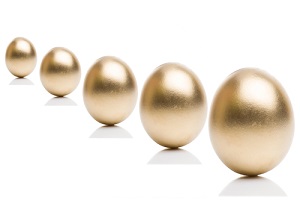Dealing and trading with gold in India
 India is the second-largest consumer of gold in worldwide. Indians are well known to keep their savings in gold as physical coins or as jewellery. In India, the annual demand of gold is approximately 800-900 tonnes over past years. Another interesting fact in India is that, a large quantity of gold is held for religious purpose that is by religious trusts and temples. The interest for gold is not only rests in using it as jewellery or coins. It is also used for in gadgets and it is also used for medical purpose. Other than using gold as physical product it is also used as financial products like Exchange Traded Funds (ETF). At each stage, there is esteemed expansion of gold related activities with social, economic and fiscal impacts.
India is the second-largest consumer of gold in worldwide. Indians are well known to keep their savings in gold as physical coins or as jewellery. In India, the annual demand of gold is approximately 800-900 tonnes over past years. Another interesting fact in India is that, a large quantity of gold is held for religious purpose that is by religious trusts and temples. The interest for gold is not only rests in using it as jewellery or coins. It is also used for in gadgets and it is also used for medical purpose. Other than using gold as physical product it is also used as financial products like Exchange Traded Funds (ETF). At each stage, there is esteemed expansion of gold related activities with social, economic and fiscal impacts.
To control the sales and possession of gold in 1968 the government of India enacted a law named The Gold (Control) Act of 1968. But later the high demand for gold in India with less indigenous production results in gold imports lead to repealing of the act.
India imports approximately 1000 tons annually. Almost 3 percent of the GDP is spending for importing Gold. Later in 2012 considering the huge demand and negligible production the government of India introduced a moderate customs duty on gold imports. Customs duty imposition led to increase in gold smuggling. The exporters and importers in India earn undeclared earnings by these exports.
Now one can trade and invest gold in its high-purity through a demat account.
An ETF is a mutual fund scheme that invests in gold. This is held in the dematerialised form just like stocks. Now days, the Gold ETFs are listed and traded on the stock exchange. Gold ETFs have several advantages over physical gold, such as liquidity, safety, tax benefits, and is cheaper than buying physical gold.
The import of gold and gold dore bars into India is governed the following norms of the reserve bank of India and Customs. The RBI/2013-14/187, AP (DIR Series) Circular No. 25 dated 14.8.2013 and was superseded by the customs circular No. 28/2009-Cus dated 14.10.200. The import of silver and platinum into India has also been added with the customs circular of 14.10.2009.
Regulatory Infrastructure
 Gold as a commodity has multiple uses. It is commonly used as jewellery and also finds use in various industrial applications. The Ministry of Consumer Affairs and Ministry of Commerce and Industry regulate Gold as a major export item. Ministry of Mines regulates the domestic production through domestic gold mines.
Gold as a commodity has multiple uses. It is commonly used as jewellery and also finds use in various industrial applications. The Ministry of Consumer Affairs and Ministry of Commerce and Industry regulate Gold as a major export item. Ministry of Mines regulates the domestic production through domestic gold mines.
The key stakeholders are concerned with the method of production, producing, wholesale and retail trade, exports, imports, quality certification, vaulting, policy formulation and specifically the final consumption of gold and gold related products. Other stakeholders embrace insurance agencies, courier agencies and different subsidiary service providers.
The Indian gold market is a highly exceptionally chaotic sector that co-exists with organised fast-growing sectors. Various government agencies, including the RBI the Director General of Foreign Trade (DGFT) and the Ministry of Finance, control who can import gold into India. Banks are approved by the RBI, while organizations are covered by foreign trade policy and are authorized by the DGFT for importing gold. Besides the organizations named explicitly as selected offices there are two bigger gatherings of importers. They are Premier Trading Houses (PTHs) and Star Trading Houses (STHs). Banks import gold on a consignment basis, whereas the organizations, STHs and PTHs are simply allowed to import on a direct payment basis.
For importing Gold into India, several conditions need to be satisfied. Prohibiting the Import of gold as coins, the entities in the SEZ and EOUs, Premier, Star Trading Houses and Gold imported against any authorization such as Advance Authorization/Duty Free Import Authorization (DFIA) are allowed to import gold for exports. All gold imports should be through customs. There should be licence issued permitting the import of gold bars by the Directorate General of Foreign Trade. SEZ and EOU, Premieres and Star Trading Houses are authorized to procure gold from the license holder for export purposes only. The license holder should submit a report on the utilization of gold bars, gold issued to exporters and the proof of export and exportation to the central excise officer.
Conclusion
 India is the second-largest consumer of gold. Gold is not only used as jewellery is also used in gadgets and for medical purposes. In the modern world, gold is used as a financial product called Exchange Traded Funds (ETF). Considering the huge demand and negligible production, the government of India move towards the import of gold. At each stage, there is an esteemed expansion of gold related activities with social, economic, and fiscal impacts.
India is the second-largest consumer of gold. Gold is not only used as jewellery is also used in gadgets and for medical purposes. In the modern world, gold is used as a financial product called Exchange Traded Funds (ETF). Considering the huge demand and negligible production, the government of India move towards the import of gold. At each stage, there is an esteemed expansion of gold related activities with social, economic, and fiscal impacts.
The import of gold and gold dore bars into India is governed by the norms of the reserve bank of India and Customs. Several conditions need to be satisfied for importing gold. Only the license holders are allowed to import gold, that too for the specified purpose.
 Русский
Русский
 English
English 官话
官话 português
português عربي
عربي
 Türk
Türk 






.jpg)





